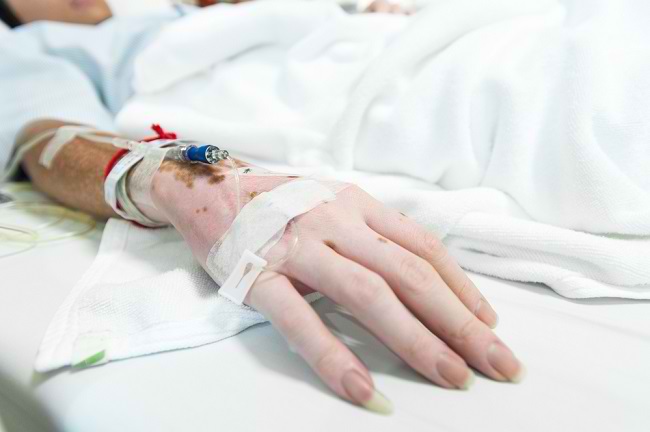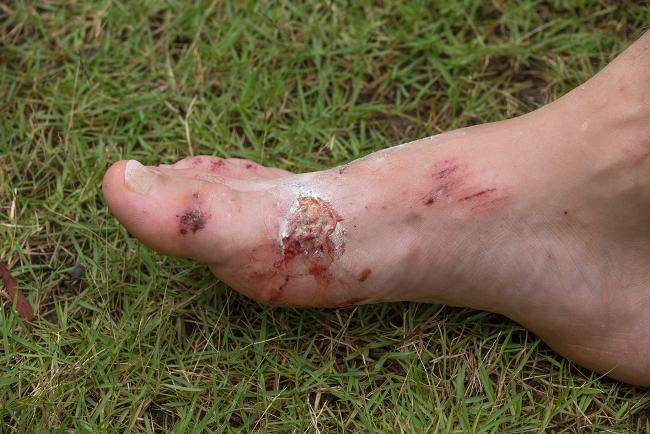Hypopigmentation is a condition that causes some areas of the skin to be lighter than the surrounding skin. Hypopigmentation is caused by a lack of the pigment melanin, the natural substance that gives skin its color.
Hypopigmentation can be caused by a variety of skin conditions. Most cases of hypopigmentation are not serious and can be treated. However, in people with dark skin, hypopigmentation will be more pronounced and can trigger feelings of insecurity, especially if it occurs on exposed skin.

Recognizing the Causes of Hypopigmentation
A common cause of hypopigmentation is a history of damage to skin tissue, such as skin infections, abrasions, burns, to other trauma to the skin. However, genetic disorders may also cause hypopigmentation.
To find out more clearly what causes hypopigmentation and what its effects are, consider the following explanation:
1. Vitiligo
Hypopigmentation can be caused by vitiligo, an autoimmune disorder that causes damage to pigment-producing cells. As a result, fine white patches appear on the skin. This disorder can last a long time and cause white patches to enlarge. In some people, these patches can appear all over the body.
2. Albinism
Albinism is a rare genetic disorder in which the enzyme that helps produce melanin is not produced. As a result, melanin production is limited. An albino (albinism sufferer) has less pigmentation of the skin, hair and eyes. This disorder is more common in white people.
3. Lichen sclerosus
Hypopigmentation can also be caused by: lichen sclerosus, which is a skin disorder that often attacks the genital area and anus. Lichen sclerosus It can happen to anyone, but postmenopausal women are more at risk for it.
Lichen sclerosus not only causes the appearance of white patches on the affected skin area, but also makes the skin become wrinkled, itchy and bleed easily if scratched.
4. Pytiriasis alba
Although it is known not to be classified as an infectious disease, until now the exact cause of pityriasis alba is not clearly known. This condition is thought to be a mild form of eczema or a skin allergy.
The hypopigmentation in ptyriasis alba is most common on the face, but can also occur on the neck, chest, back and upper arms. The appearance of hypopigmentation is often associated with sun exposure. Initially, the hypopigmented patches are not immediately pale or white, but pink and scaly.
5. Infection
Complaints of hypopigmentation can also be caused by an infectious process, including: pityriasis versicolor or often known as tinea versicolor and leprosy which is also known as leprosy.
Panu is caused by a fungal infection that grows on the surface of the skin and causes hypopigmented patches, while leprosy is caused by a bacterial infection Mycobacterium leprae, which in the early phase is characterized by numbing hypopigmented patches.
6. Post-inflammatory hypopigmentation
Scars that heal after inflammation may be hypopigmented. This can occur in wounds caused by skin diseases or injuries, especially burns, such as being exposed to exhaust, scalded by hot water, or irritating from chemical exposure.
Treating Hypopigmentation Properly
Doctors can diagnose hypopigmentation based on the appearance of abnormalities on the skin, ranging from the shape, size, location, and nature of the spots. The doctor may also recommend investigations such as skin scrapings and laser scans to help diagnose the cause of the hypopigmentation.
Here are some treatments that may be given by a doctor:
Administration of ointment
Your doctor may recommend topical medications for hypopigmentation. In patients lichen sclerosus and pityriasis alba for example, an anti-inflammatory cream may be prescribed to moisturize and speed up the healing process.
Meanwhile, in the case of hypopigmentation caused by tinea versicolor, an antifungal cream will be prescribed to kill the fungus that lives on the skin so that the hypopigmentation can gradually return to normal.
Laser therapy
In some cases, such as hypopigmentation caused by scars, laser therapy can help restore skin tone. The reason, laser therapy is able to stimulate the production of new skin cells to replace damaged skin cells.
Chemical peels
Some cases of hypopigmentation can be treated with chemical peels. This treatment procedure is done by applying a chemical solution to the hypopigmented skin area. With this chemical solution, the skin layer will be exfoliated and replaced with new, healthier skin cells.
The series of hypopigmentation treatments above cannot be applied to all cases of hypopigmentation because the treatment given must be based on the cause. Leprosy treatment must use antibiotics and monitored over a long period of time.
In cases of hypopigmentation caused by vitiligo, the doctor may recommend other treatments such as ultraviolet light therapy, high-strength corticosteroids, or skin grafts if the vitiligo is very large.
As for the hypopigmentation experienced by people with albinism, until now there has been no treatment to overcome it. However, people with albinism should use sunscreen at all times because they are more prone to skin damage and skin cancer from sun exposure.
Hypopigmentation can be caused by a variety of skin conditions, the diagnosis of which requires careful examination. In addition, not all treatments can be done with over-the-counter drugs. Some conditions even require quite complicated therapy.
If you have hypopigmented patches on the skin that are enlarged in size, disturbing your appearance, or accompanied by a number of other complaints, you should check with your doctor, so that a proper diagnosis can be found and with that, treatment can be adjusted according to the cause.









